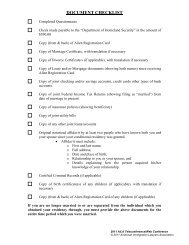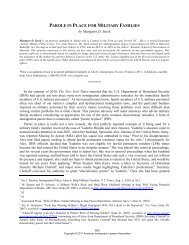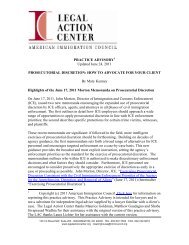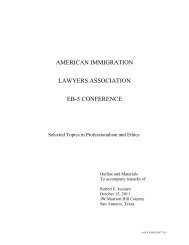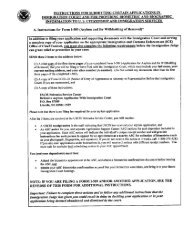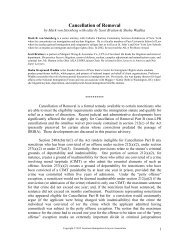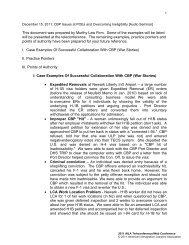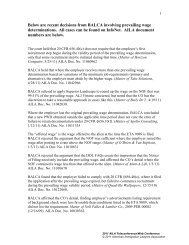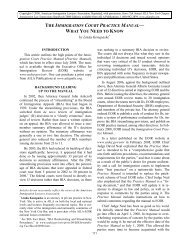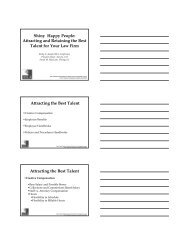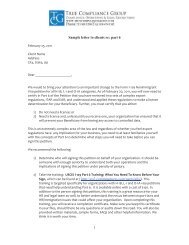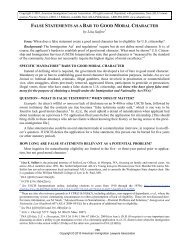Resources for 04-26-11 Seminar - AILA webCLE
Resources for 04-26-11 Seminar - AILA webCLE
Resources for 04-26-11 Seminar - AILA webCLE
Create successful ePaper yourself
Turn your PDF publications into a flip-book with our unique Google optimized e-Paper software.
The essential element in determining the existence of an "employer-employee" relationship is the rightof control; that is, the right of the employer to order and control the employee in the per<strong>for</strong>mance of hisor her work. Possession of the authority to engage or the authority to discharge is very strong evidenceof the existence of an employer-employee relationship.9 FAM 41.54 N8.1 Source of Remuneration and Benefits Not Controlling (CT:VISA-1569; 10-<strong>04</strong>-2010)The source of the beneficiary’s salary and benefits while in the United States (i.e., whether thebeneficiary will be paid by the U.S. or <strong>for</strong>eign affiliate of the petitioning company) is not controlling indetermining eligibility <strong>for</strong> L status. In addition, the employer-employee relationship encompasses asituation in which the beneficiary will not be paid directly by the petitioner, and such a beneficiary is notprecluded from establishing eligibility <strong>for</strong> L classification.9 FAM 41.54 N8.2 Employment in the United States Directly by Foreign Company Not Qualifying(CT:VISA-1569; 10-<strong>04</strong>-2010)A beneficiary who will be employed in the United States directly by a <strong>for</strong>eign company and who will notbe controlled in any way by (and thus, in fact, not have any employment relationship to) the <strong>for</strong>eigncompany’s office in the United States does not qualify as an intra-company transferee.13. The issue of control by the sending employer is critical. When the employment is off-site, there canbe two ways of determining control, both indicated in the INA definition. The employee can be directlycontrolled by a supervisor from the sending company. The employee may also work off-site withoutdirect supervision at that site, but in "connection with the provision of a product or service <strong>for</strong> whichspecialized knowledge specific to the petitioning employer is necessary." This could mean, <strong>for</strong> example,that the employee would be working <strong>for</strong> an off-site, unaffiliated company that has no IT department,and there<strong>for</strong>e the employee would be using specialized knowledge that only the petitioning companycan oversee or evaluate. It could also mean the employee is working on a proprietary project involvingknowledge and skills specific to the petitioning employer and not possessed by the unaffiliatedcompany. On the other hand, an off-site employee working in the IT section of an unaffiliated companywho is not under the direct supervision of the petitioner or working on a proprietary project involvingknowledge and skills specific to the petitioner would probably not qualify <strong>for</strong> L status based on job shopconcerns.<strong>AILA</strong> InfoNet Doc. No. <strong>11</strong>012433. (Posted 1/24/<strong>11</strong>)



